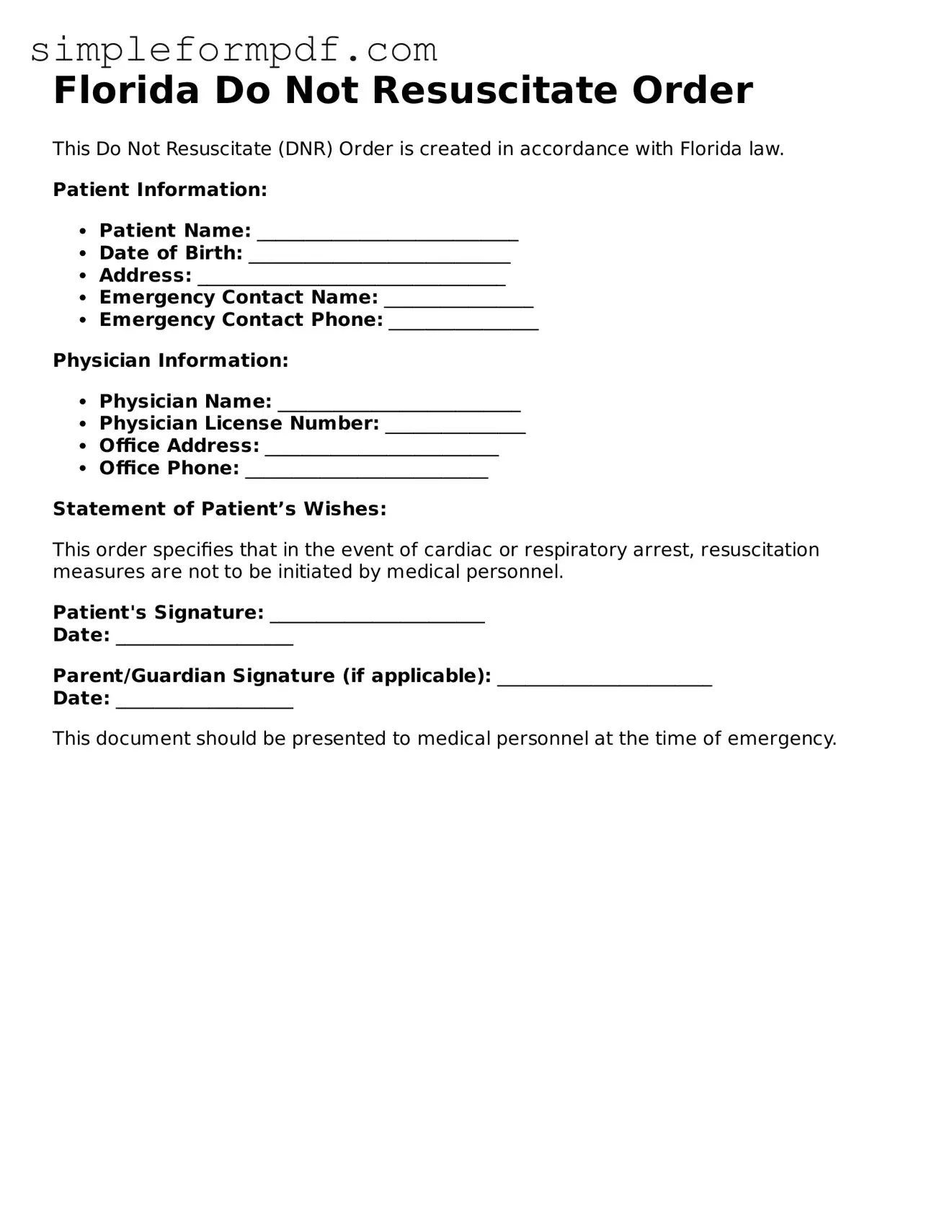Free Do Not Resuscitate Order Form for the State of Florida
A Florida Do Not Resuscitate Order form is a legal document that allows individuals to express their wishes regarding resuscitation efforts in the event of a medical emergency. This form provides clarity for healthcare providers and loved ones about a person's preferences for life-saving measures. To ensure your wishes are known, consider filling out the form by clicking the button below.
Launch Editor
